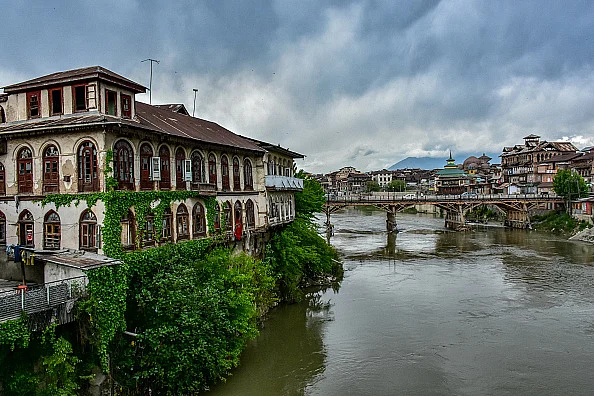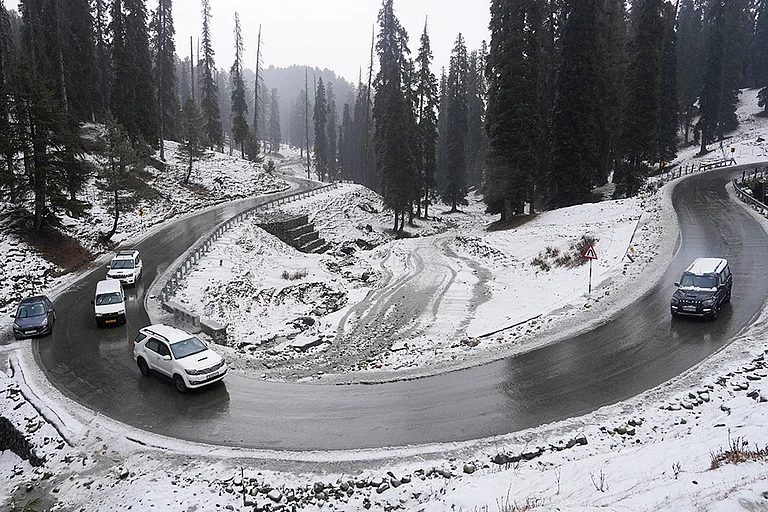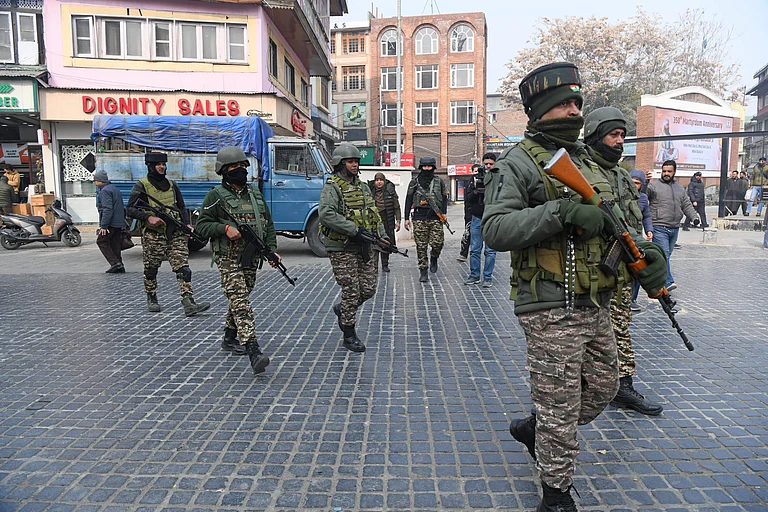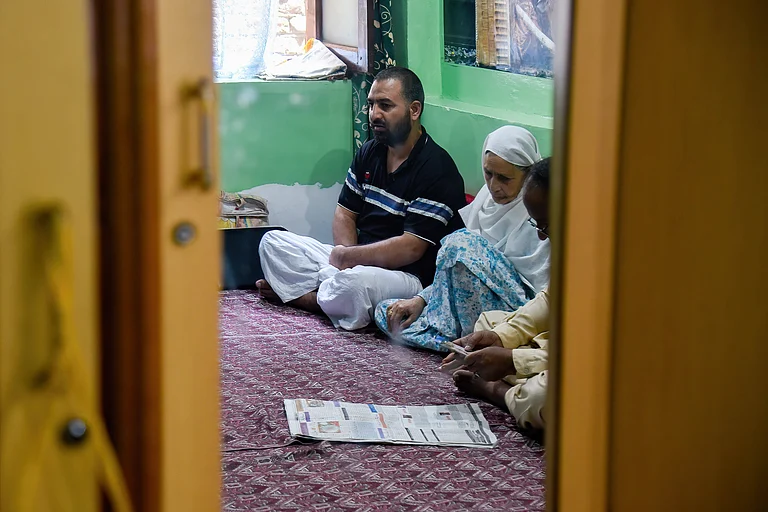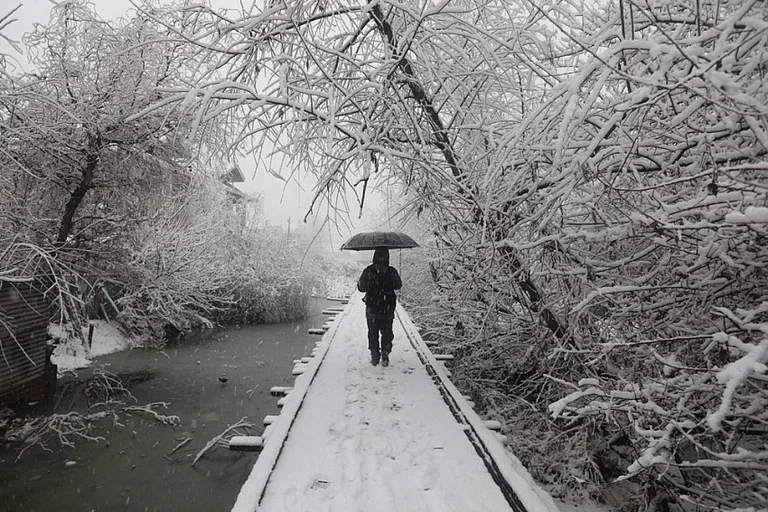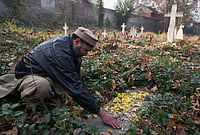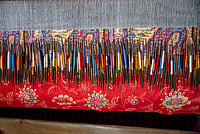Srinagar City is known for its unparalleled beauty, charm, and rich heritage. The old city of Srinagar in particular is the hub of most crafts of the valley. Popularly known as Shehr-e-Khaas, it is a labyrinth of arterial roads and bustling bazaars. Lending the area its vitality is the River Jhelum, which gently flows through it, refreshing the hearts and souls of the residents. Nine bridges span the river in all, connecting different parts of the city to each other.
My childhood evenings of storytelling are unforgettable. My ancestral house was in Fatehkadal area of downtown, to which my roots are deeply connected. It has always been a pleasure to listen to the stories my father has to share about how life used to be in that area.
On the morning of 6th of zil hijah, which marks the urs of Hazrat Shah Hamadan whose shrine holds Fatehkadal under its divine blessings, I saw my father decked in a pashmina dusah and a Kashmiri karakul. He was all set to pay his respects to Hazrat Shah Hamadan at Khanqah-e-Maula. I was curious about why my father awaited this day so eagerly.
He explained in an emotional tone, “It is not just about the Khanqah, my soul is deeply attached to that place. I spent my childhood there, running around and playing at the courtyard of Amir-e-Kabir. Our house was located at Dukani Sangeen at Fatehkadal, just behind the shrine. We grew up listening to the echoes of manqabats and holy chants. That was the time when I was in grade 6 at the mission school (Tyndale Biscoe). I still remember each route and lane of downtown clearly.”
“I wish I was born in those days,” I said.
My father replied, “I love all of downtown. Not just Fatehkadal, but all the nine bridges have had an impact on my childhood. It is interesting to note how different areas of Shehr-e-Khaas are known for their own specialised arts and crafts, or produce of Kashmir. The demographics of the city are such that during ancient times, people settled in different areas of Shehr-e-Khaas based on their occupations. Be it the Harissa of Aalikadal or the Khatam band of Safakadal, the Tilla Dozi of Khanqah or the crewel embroidery of Nowhatta, the old city of Srinagar has something special to offer. Since this place is culturally and historically so rich, I will definitely take you through its streets and introduce you to its specialities step by step.”
I was so excited to go on this journey with him. We started at the Pather Masjid. On reaching the ancient mosque, my father explained the history of the place by narrating a story he had heard. “It is said that this mosque was built by Empress Noor Jahan, who weighed her silver shoe and donated the equivalent money to construct the structure. In doing so, she invoked the anger of Muslim scholars, who felt insulted by her act of comparing their place of worship to a shoe and ordered the Muslim community to refrain from praying here.”
On our way to discover more, we came across the ancient shrine of Sheikh Syed Abdul Qadir Jeelani, a pious Muslim saint, located in Khanyar. This shrine is around 200 years old and every year, thousands of people visit it with full faith and belief. Before it caught fire in 2012, its interiors used to reflect the old lavish architecture of Kashmir. The intricate paper mâché crafted over the traditional Khatam band gave a touch of royalty and beauty to the entire place.
Surrounding this shrine is a busy market where one can relish the flavours of masala roti, nadir monje, and a variety of street food of Kashmir. Here, artisans carve pieces of walnut wood décor with skill and precision. As we travelled on to see the Jamia Masjid, we crossed Nowhatta chowk, which is known for its specialised crewel embroidery. It was a delight to watch artisans crafting tea cozies, cushion covers, rugs and wall hangings, which I had only seen in high-end stores, with steady, experienced hands with the help of an awl or aari. On reaching the Jamia Masjid, my father told me that it was built by Sultan Sikander in the year 1400. The architectural style of this mosque is inspired by the magnificent chinar tree.
While admiring the mosque’s beauty, my father said, “This mosque has 370 pillars, all of them made of logs of chinar trees.” As you walk out of this serene place, you will come across silversmiths making silver jewellery that women have worn since time immemorial.
Our next stop was Rajourikadal, a place where specialised coppersmiths live, their shops overflowing with an amazing profusion of copperware. “Copper, or tram as it is called in Kashmiri, has a deep connection with central Asia,” my father said. He was happy to guide me through the streets since they took them back to the beautiful days of his childhood.
Driving across a few arterial roads which connected us to Zainakadal, we arrived at a bustling market of hokh syun (dried foods), dry fruits and exotic spices. Their aroma was delightful. “In earlier times, vegetables were dried during summers for consumption during the harsh winters, when the valley of Kashmir would be cut off from the rest of the world,” my father told me. “Even today, we can find dried tomatoes, dried chilies, dried cockscomb flower, and dried bottle gourd, among other common vegetables in this market.”
My father fondly remembered that his friend Anil Kaul used to live in this area. Moving on, we reached the trade centre of Srinagar City–Maharajgunj. This was the hub of all wholesale markets. If one wants to buy things in bulk, be it textiles, dry fruits or utilities, this is the place to go to. Next, we headed to a place which is a food paradise for everyone–Aalikadal, known for harissa, the sizzling winter delicacy of Kashmir. This typical winter breakfast dish is relished with the local kandar chotte (bread). I could see my father was lost in thought as we ordered some harissa.
“If you are visiting the downtown area of Kashmir and you haven’t tasted the harissa of Aalikadal, you are surely missing out on something,” he said after a while. We tucked into the harissa while watching artisans of Tilla Dozi painstakingly crafting trousseaus for brides.
This was our final stop. The sun had already set by now casting an orange yellow spell across the sky, which beautifully reflected off the water. We do have more journeys to go on, more stories and traditions to explore...
Shereen Naman is a Journalism and Mass Communication student at the Islamic University of Science and Technology, Awantipora, Kashmir.






